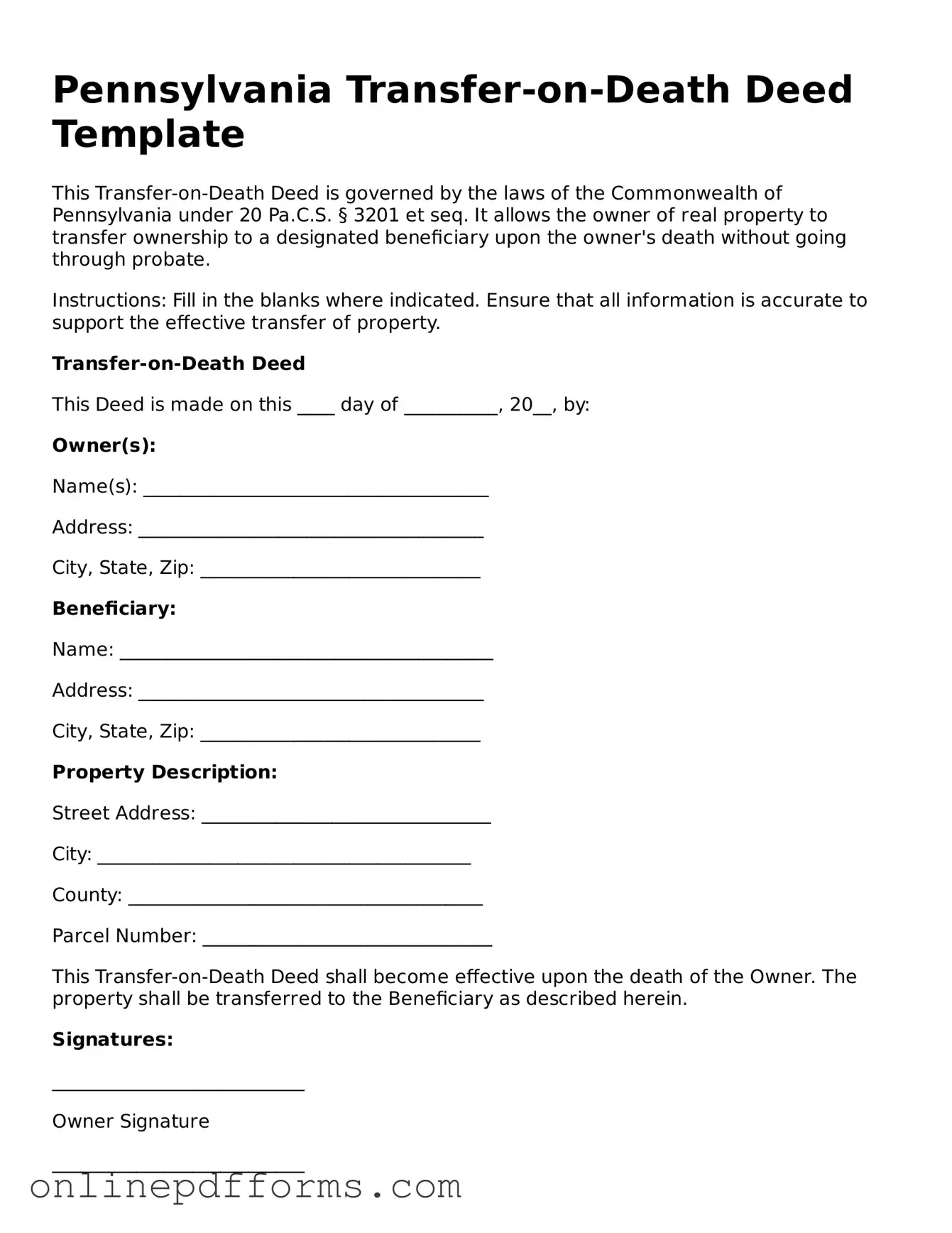The Pennsylvania Transfer-on-Death Deed (TODD) is a unique estate planning tool, but it shares similarities with several other legal documents that facilitate the transfer of property upon death. One such document is the Last Will and Testament. A will outlines how a person's assets should be distributed after their death, appointing an executor to manage the process. Unlike a TODD, which allows for direct transfer without going through probate, a will typically requires court involvement, making the distribution process potentially longer and more complex.
Another comparable document is the Revocable Living Trust. This trust allows individuals to place their assets into a trust during their lifetime, with the stipulation that the assets are managed for their benefit. Upon their death, the assets can be transferred to beneficiaries without the need for probate, similar to a TODD. However, creating a trust generally involves more upfront legal work and costs compared to a simple transfer-on-death deed.
When considering important documents, understanding the nuances of a Medical Power of Attorney form can be crucial. This legal document empowers an individual to appoint an agent for healthcare decisions, creating a clear plan for when one may be unable to voice their preferences. For more information, you can explore the significance of a Medical Power of Attorney document.
The Joint Tenancy with Right of Survivorship is also similar to a TODD. This legal arrangement allows two or more individuals to own property together, ensuring that if one owner passes away, their share automatically transfers to the surviving owner(s). While both documents facilitate a seamless transfer of property, joint tenancy requires co-ownership during the owner's lifetime, whereas a TODD can be executed unilaterally.
Life Estate Deeds are another related option. A life estate deed allows an individual to retain the right to use and occupy property during their lifetime, with the property automatically transferring to a designated beneficiary upon their death. Like a TODD, this deed avoids probate, but it imposes restrictions on the property owner during their lifetime, which is not the case with a TODD.
The Beneficiary Designation form is frequently utilized for financial accounts, such as bank accounts or retirement plans. This form allows individuals to designate beneficiaries who will receive the assets upon their death, bypassing probate. While this document applies primarily to financial assets rather than real estate, the underlying principle of direct transfer to a named beneficiary is a commonality shared with the TODD.
Transfer-on-Death Registration for vehicles is another document that mirrors the TODD's function. In this case, vehicle owners can register a beneficiary who will inherit the vehicle upon the owner's death. Similar to a TODD, this registration simplifies the transfer process and avoids the complexities of probate, though it is specific to motor vehicles rather than real property.
Another document that resembles the TODD is the Payable-on-Death (POD) account agreement. This agreement allows bank account holders to designate a beneficiary who will receive the funds in the account upon the account holder's death. Like the TODD, a POD agreement ensures a straightforward transfer of assets without the need for probate, providing a clear and efficient way to pass on financial resources.
Durable Power of Attorney is also worth mentioning, though it serves a different purpose. This document grants someone the authority to make financial or medical decisions on behalf of another person if they become incapacitated. While it does not directly relate to the transfer of property upon death, it can be part of a comprehensive estate plan that includes a TODD, ensuring that both immediate and future needs are addressed.
Lastly, the Family Settlement Agreement is a document that can come into play after a person's death. It outlines how the deceased's estate will be divided among heirs and can help avoid disputes. While it does not facilitate the transfer of property like a TODD, it serves as a way to clarify intentions and agreements among family members, especially when the deceased did not leave a clear directive.
